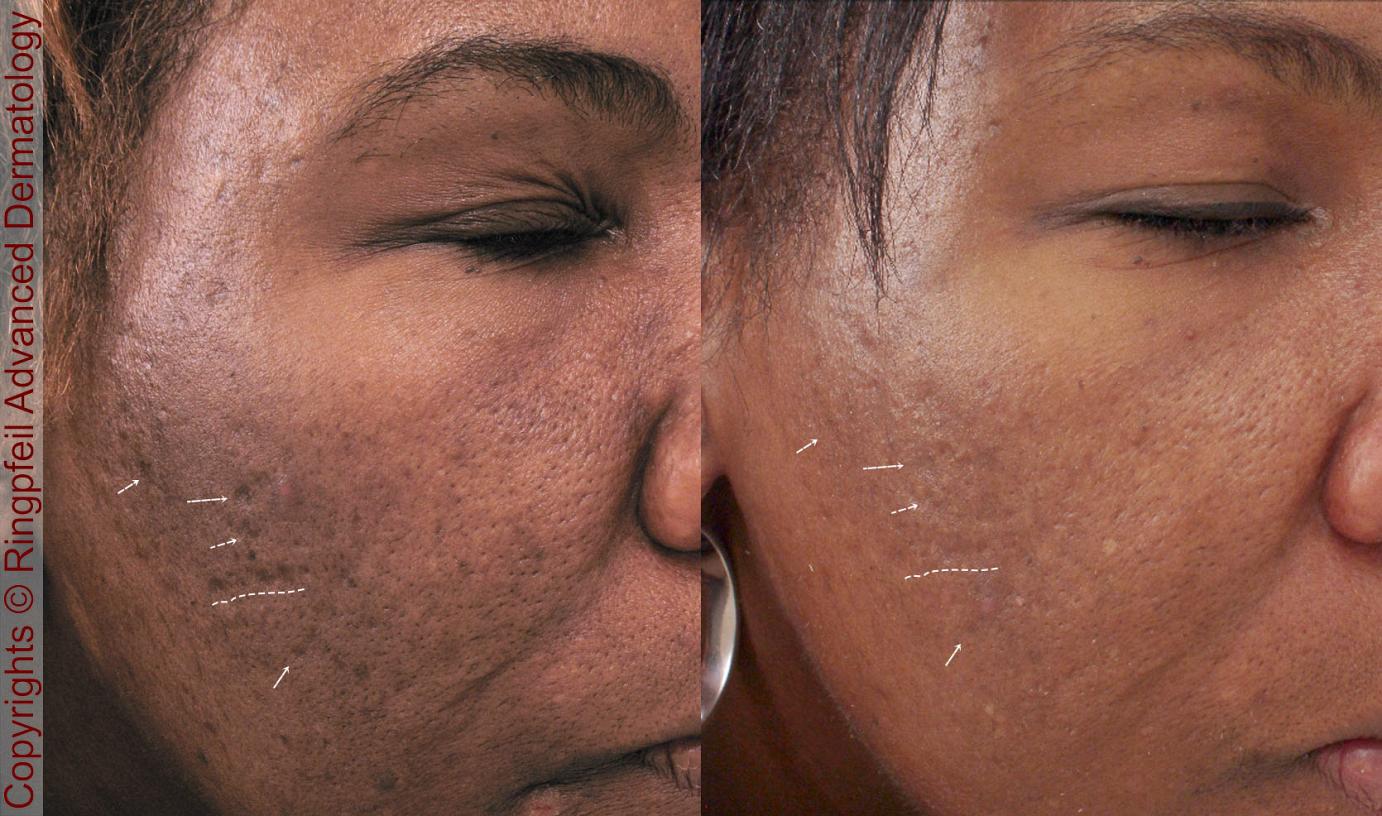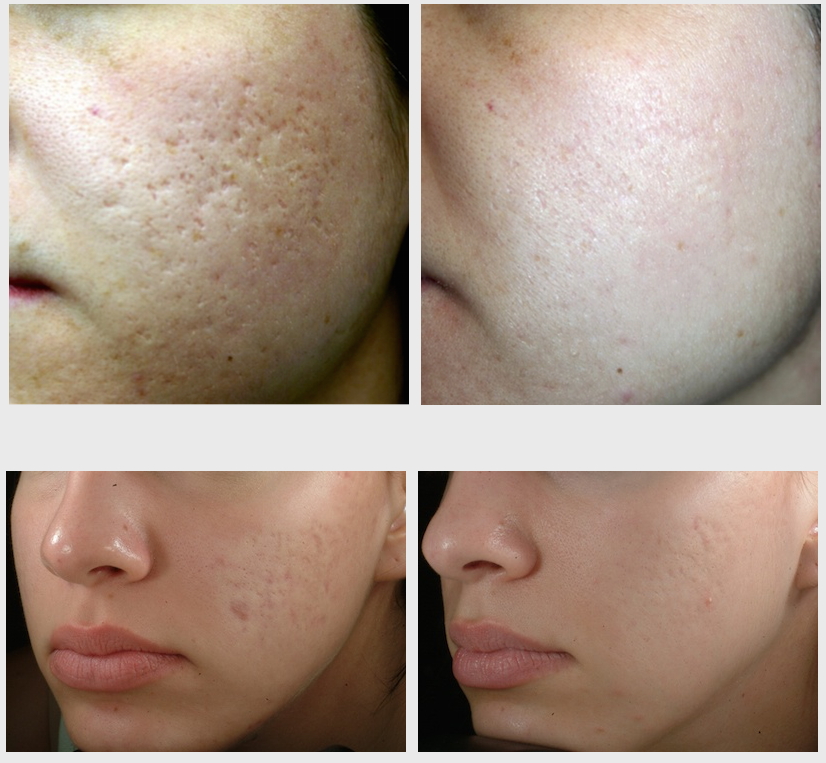Professional Acne and Acne Scars Treatment: Durable Results for More Clear Skin
Professional Acne and Acne Scars Treatment: Durable Results for More Clear Skin
Blog Article
Checking Out Skin Problem: Dealing With and recognizing Acne Scars for Healthier Skin
Acne scars represent a significant issue for people seeking to maintain healthy skin, as they can affect both appearance and self-confidence. Comprehending the different kinds of scars, from atrophic to hypertrophic, is important for establishing appropriate treatment choices. While professional treatments like chemical peels and microneedling can be effective, the importance of individualized care strategies can not be overstated. Preventative actions play a critical function in reducing future scarring. As we explore these elements, one should consider just how the ideal technique can cause transformative outcomes.
Comprehending Acne Scars
Understanding acne scars is crucial for any person who has experienced extreme acne, as these marks can have an enduring effect on both physical look and emotional wellness. Acne scars form when the skin undergoes inflammatory reactions throughout energetic acne lesions. The severity of scarring is usually influenced by factors such as the kind of acne, its period, and specific skin characteristics.
The body's all-natural recovery process can cause either atrophic scars, which look like depressions in the skin, or hypertrophic scars, which are increased and arise from overflow of collagen. In addition, the psychological toll of acne marks should not be undervalued; lots of individuals report sensations of embarrassment, stress and anxiety, and decreased self-esteem. This psychological burden can influence social interactions and overall lifestyle.
Addressing acne scars needs a comprehensive understanding of their development and effect. Recognition of the potential for long-term effects connected with neglected scars can inspire individuals to look for appropriate therapies. Early treatment and efficient administration approaches can dramatically boost skin appearance and improve emotional strength, stressing the significance of recognizing the complexities bordering acne scars.
Types of Acne Scars
Acne scars can be categorized into distinctive types, each showing distinct qualities and requiring details treatment strategies. The key sorts of acne scars include atrophic, hypertrophic, and keloid scars.

Hypertrophic marks, on the other hand, are increased above the skin degree and are the outcome of excessive collagen production during the healing process. They normally stay within the boundaries of the initial acne lesion. Keloid marks are similar but extend beyond the initial injury website, creating larger, elevated locations that can be unpleasant or scratchy.
Comprehending these sorts of scars is necessary for picking appropriate therapy alternatives. Different scars might respond much better to specific treatments, such as laser treatments, fillers, or surgical interventions, stressing the importance of a tailored strategy to acne mark monitoring.
Identifying Your Scars
When evaluating the appearance of your skin, it is important to properly identify the kind of scars existing, as this will educate the most effective therapy method. Acne scars normally fall into two categories: hypertrophic and atrophic marks. Atrophic marks, which are the most typical, look like clinical depressions explanation or impressions on the skin. These can additionally be identified right into ice-pick marks, boxcar scars, and rolling scars, each showing unique qualities and calling for various methods for assessment.
Hypertrophic scars, on the other hand, are elevated and occur as a result of too much collagen manufacturing go to this web-site during the recovery procedure. Acknowledging the details features of your scars-- such as structure, deepness, and size-- is crucial for appropriate recognition. Furthermore, take into consideration the circulation of marks across your skin, as this can indicate the seriousness and duration of the acne condition.
Engaging with a dermatologist can give important insights into the nature of your marks, assisting in the differentiation between various types. An extensive understanding of your marks will eventually bring about a more customized and efficient therapy strategy, guaranteeing a more clear and much healthier complexion.
Therapy Options Readily Available
Identifying the details kind of acne scars existing on your skin lays the groundwork for discovering efficient treatment alternatives. Usual sorts of acne scars include atrophic (clinically depressed), hypertrophic (raised), and post-inflammatory erythema.
For atrophic scars, alternatives such as chemical peels, microneedling, and laser resurfacing are widely used. Chemical peels use acids to remove the outer layer of skin, advertising brand-new cell growth. Microneedling involves small needles that develop micro-injuries, boosting collagen production. Laser resurfacing targets damaged skin cells, improving texture and tone.
Hypertrophic scars can be treated with corticosteroid shots to flatten the scar or laser treatment to lower redness and improve look. acne and acne scars treatment. Silicone gel sheets and stress dressings might likewise help in handling increased scars
In addition, dermal fillers can briefly complete clinical depressions from atrophic marks, while medical excision may be appropriate for serious instances. Each treatment alternative has its benefits and considerations, making it important to speak with a skin doctor. They can supply tailored suggestions based on the kind and severity of your marks, in addition to your skin type and overall wellness.
Tips for Avoidance
Reliable prevention approaches can substantially reduce the probability of establishing acne scars. The initial step is to preserve a regular skin care regimen that consists of gentle cleaning, exfoliation, and hydrating. Utilizing non-comedogenic items helps prevent blocked pores, which can exacerbate acne. Furthermore, integrating topical treatments including salicylic acid or benzoyl peroxide can successfully manage breakouts and lessen swelling.
Staying clear of the desire to choose or stand out acne sores is essential, as this can cause much deeper skin damage and increase the danger of scarring. Instead, think about using a chilly compress or over-the-counter therapies to minimize swelling and redness.
Sun security is one more crucial element of prevention; ultraviolet (UV) rays can dim scars and hinder the recovery procedure. Using a broad-spectrum sun block with a minimum of SPF 30 daily can protect the skin and promote even recovery.
Lastly, maintaining a balanced diet rich in vitamins, minerals, and antioxidants supports skin health and wellness and healing. Staying moisturized and managing anxiety degrees can likewise play a significant role in minimizing acne flare-ups. By implementing these methods, people can substantially minimize their opportunities of establishing acne scars.

Conclusion
In conclusion, understanding and determining acne scars is necessary for effective therapy and achieving healthier skin. Various sorts of acne marks, including hypertrophic and atrophic scars, necessitate certain treatments customized to specific demands. Treatment alternatives variety from chemical peels and microneedling to corticosteroid injections, highlighting the value of seeking advice from a skin doctor. Furthermore, embracing read the full info here a gentle skin care regimen and safeguarding the skin from UV direct exposure can dramatically add to the prevention of additional scarring and general skin wellness.
The body's all-natural recovery procedure can result in either atrophic scars, which show up as anxieties in the skin, or hypertrophic scars, which are increased and result from overproduction of collagen. They are more divided right into 3 subtypes: ice choice scars, boxcar scars, and rolling marks. Acne marks usually drop into two classifications: hypertrophic and atrophic scars. These can better be classified into ice-pick scars, boxcar scars, and rolling marks, each exhibiting unique characteristics and calling for different methods for assessment.
Different types of acne marks, including atrophic and hypertrophic marks, necessitate specific treatments tailored to individual demands.
Report this page